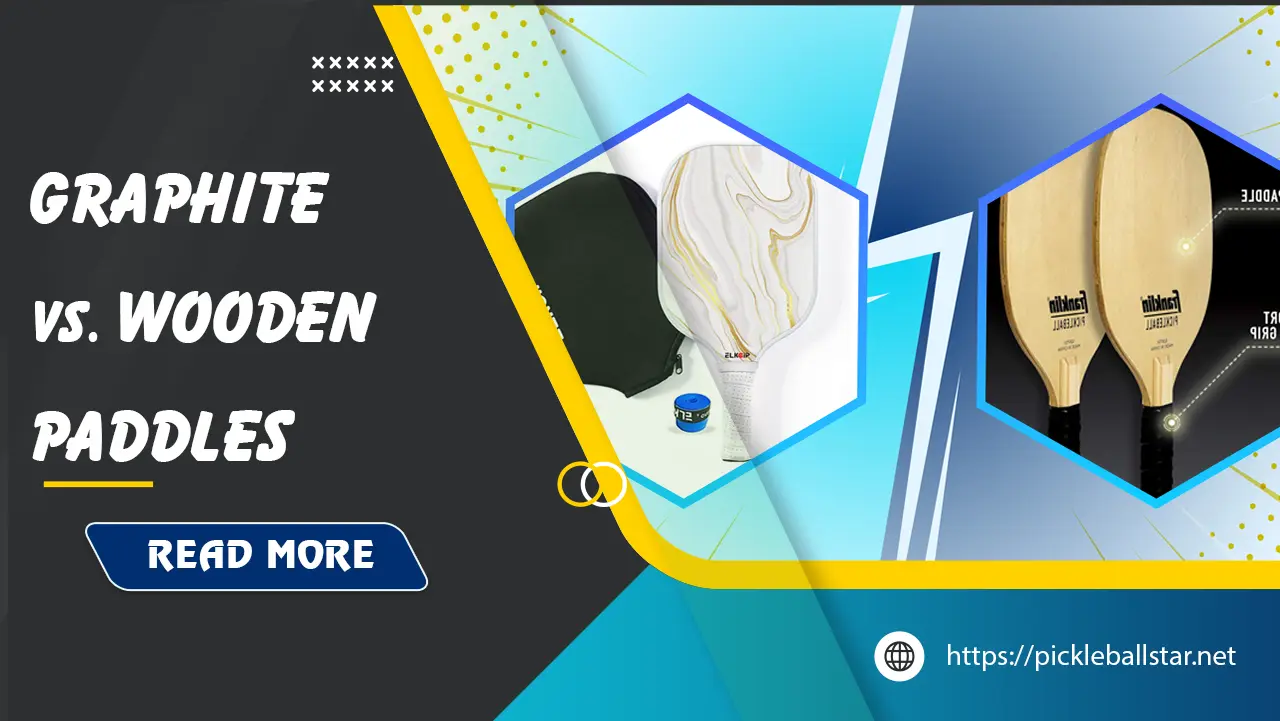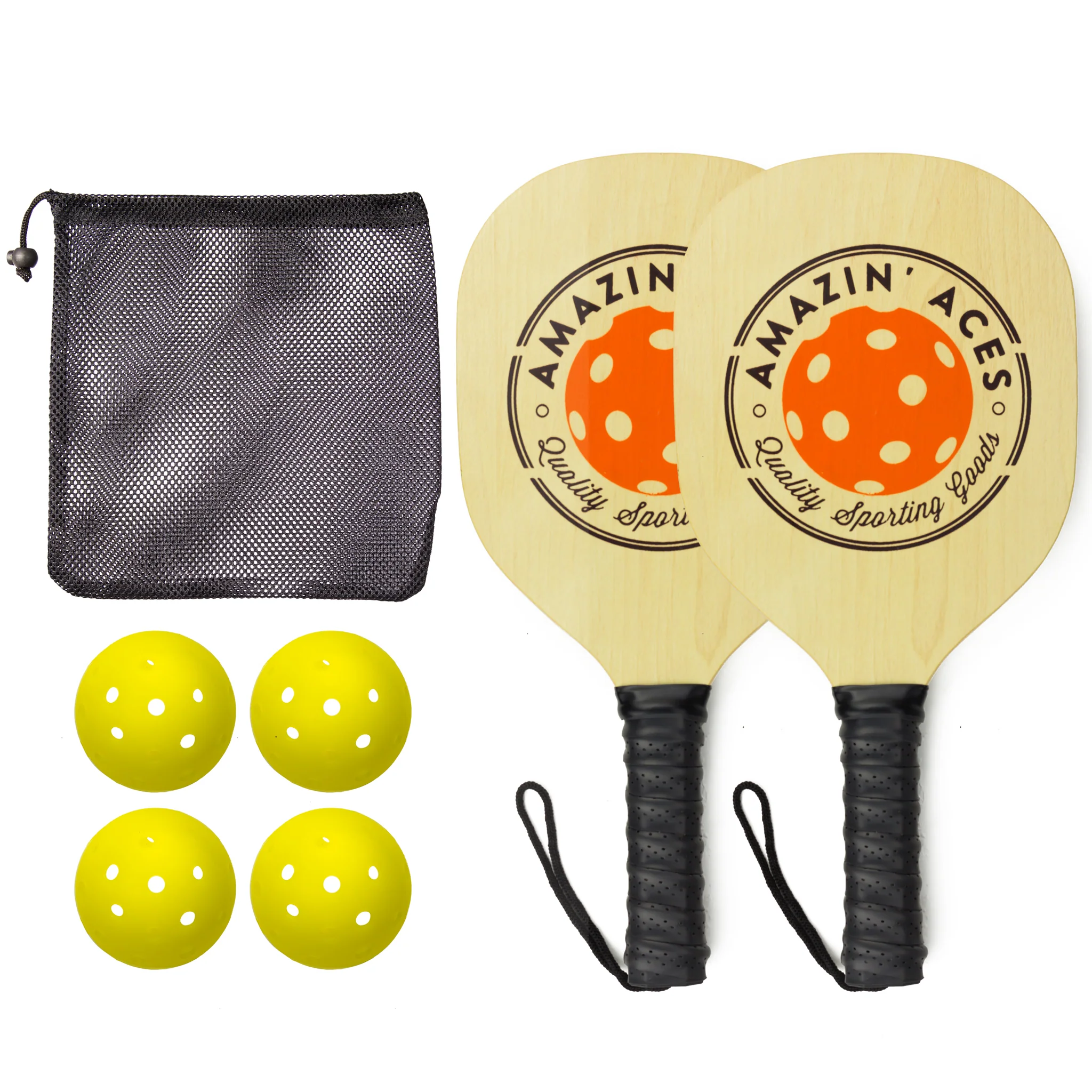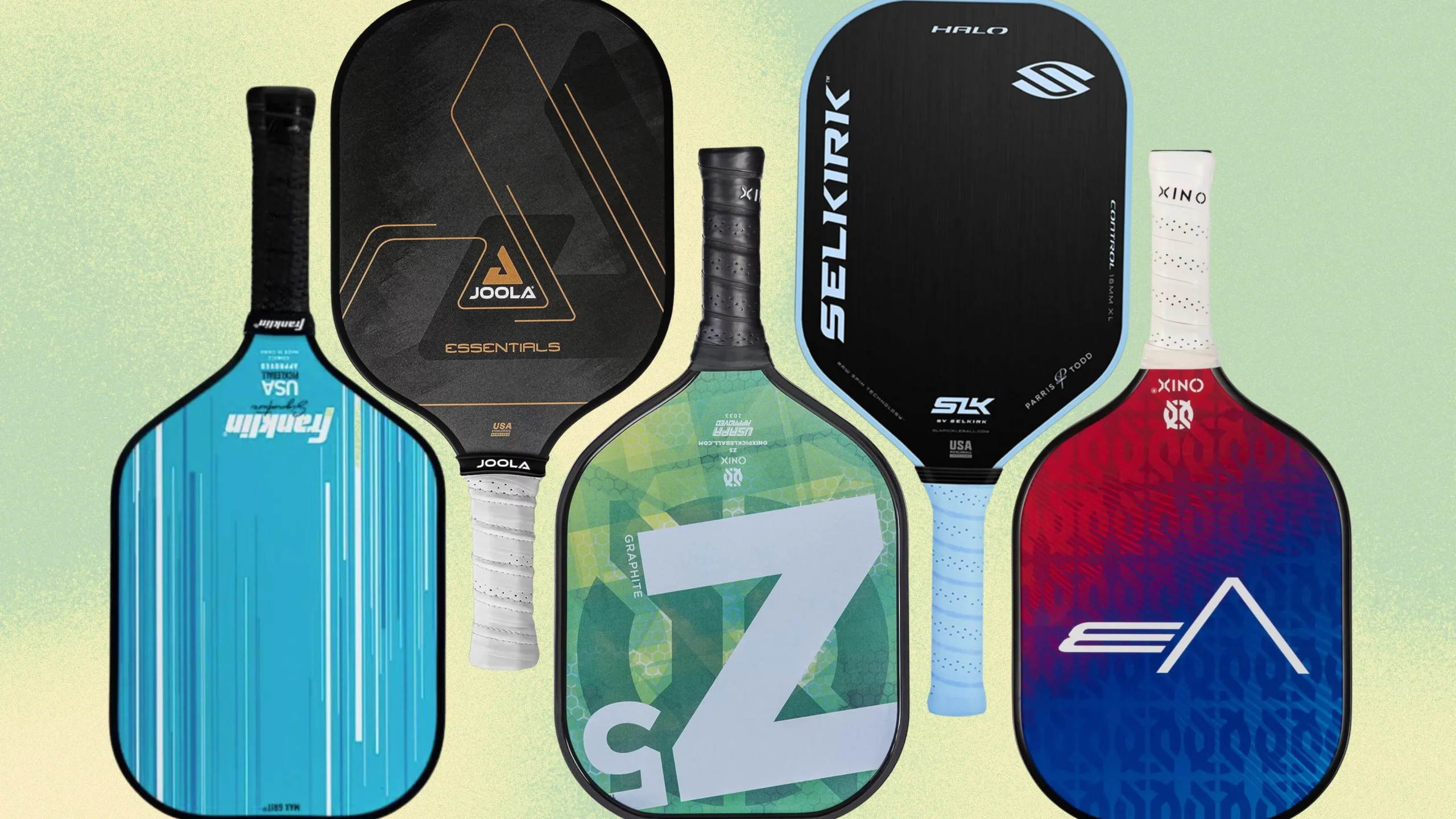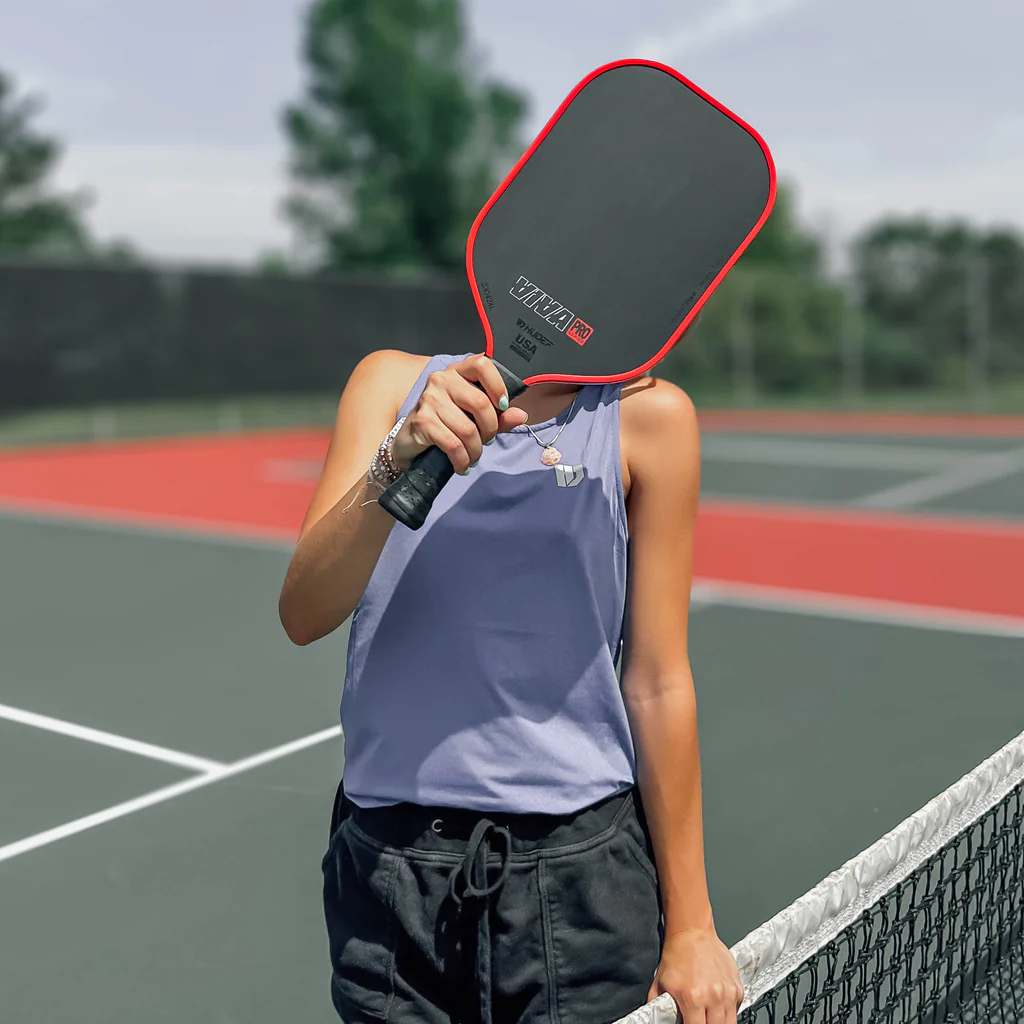Wood vs Graphite Pickleball Paddles: Pros & Cons
Pickleball paddle materials have evolved over time, offering a range of options to suit different playing styles and preferences. Wood paddles represent a traditional choice, while graphite paddles showcase modern innovation. Understanding the advantages and disadvantages of wood vs graphite pickleball paddles can help you make an informed decision about which one is best suited for your game. While wood paddles offer a traditional feel and a unique playing experience, graphite paddles are known for their enhanced performance, durability, and versatility. By carefully considering the nuances of each material, you can select the paddle that best complements your game and helps you unlock your full potential.

Wood Pickleball Paddles: A Classic Choice with a Unique Feel
The Traditional Appeal of Wood: A Natural and Responsive Paddle
Wood paddles have a storied history in the world of pickleball, often being the material of choice for the game’s earliest enthusiasts. The natural grain of wood provides a unique tactile experience, often described as more organic and traditional compared to modern materials. When you hold a wood paddle, you can feel a certain connection to the sport’s roots, which may translate into a deeper appreciation for the game’s finer nuances.

For many players, the classic feel of a wood paddle is irreplaceable. The natural material fibers offer a soft yet firm grip that can make handling the paddle an enriching experience. The sound of the ball meeting the wood is often described as a satisfying “pop,” contributing to a sense of nostalgia and authenticity.
Durability and Longevity: A Well-Crafted Paddle Can Last
When it comes to durability, wood paddles are nothing short of robust. Well-crafted wooden paddles can withstand the rigors of play, lasting for years if properly maintained. Unlike some modern materials that might chip or crack under pressure, wood tends to be more forgiving and resilient to everyday impacts. This durability makes wood paddles a cost-effective option for budget-conscious players who want to invest in a reliable piece of equipment.
Moreover, the craftsmanship involved in making high-quality wood paddles speaks to the timeless appeal of traditional woodworking techniques. Paddle makers often use select woods for their strength and durability, ensuring that each paddle can handle the stress of intense play. When cared for properly, a wooden paddle can serve as your trusted companion on the court for years, providing consistent performance.
The Unique Feel and Power of Wood Paddles
Wood paddles are often perceived as providing more power due to their weight. The mass of the paddle can make it easier to generate forceful shots, which is an advantage for players who rely on powerful, aggressive play. Additionally, the natural material tends to offer a more forgiving experience on mishits, making it easier to control the ball and execute precise shots.
While wood paddles might not have the lightness or advanced engineering of modern materials, their unique feel and power make them a beloved choice for many players. The ability to channel force through the natural heft of the paddle can be empowering, especially for those who enjoy a more traditional, hands-on approach to the game.
Some Drawbacks to Consider
However, it’s not all smooth sailing with wood paddles. Their weight, while advantageous for powering through shots, can also be a drawback. Extended play with a heavier paddle can lead to fatigue, especially for those not used to the heft. Additionally, wood paddles have a tendency to absorb moisture, which can affect their performance and longevity if not cared for adequately.
Here is a simple comparison:
| Pros | Cons |
|---|---|
| Durable and long-lasting | Heavier, can cause fatigue |
| Classic feel and sound | Absorbs moisture |
| Cost-effective | Slower swing speed |
For players who appreciate a traditional feel, the pros often outweigh the cons. Despite the potential for added fatigue and moisture absorption, the durability and classic charm of wood paddles make them a worthwhile consideration.
Graphite Pickleball Paddles: The Power of Modern Technology
The Innovation of Graphite: A Responsive and Controllable Paddle
Graphite paddles represent the cutting edge of pickleball technology. Made from advanced composite materials, these paddles offer several advantages, including lightweight construction and superior responsiveness. The innovation behind graphite paddles enables players to enjoy a more agile and dynamic playing experience, suitable for various skill levels and play styles.

One standout feature of graphite paddles is their exceptional responsiveness. The material’s properties allow for precise control over the ball, making it easier to execute delicate shots and rapid volleys. The smooth, consistent feel of a graphite paddle provides confidence and precision, whether you’re smashing the ball or performing a soft dink. Players often describe the experience as having a paddle that reacts almost intuitively to their movements.
Enhanced Performance and Versatility: A Paddle for Every Game
Graphite paddles are renowned for their ability to deliver power and control in equal measure, combining the best of both worlds. The lightweight nature of graphite allows for quicker reaction times and enhanced maneuverability, enabling players to move swiftly and adjust their shots with ease. This makes graphite paddles an excellent choice for those who want to adopt an aggressive, fast-paced playing style.
Versatility is another hallmark of graphite paddles. They are designed to accommodate a wide range of shots, from powerful drives to finesse plays. This adaptability makes them suitable for both offensive and defensive strategies, providing players with the tools they need to excel in various game situations. Whether you’re a seasoned pro or an enthusiastic beginner, a graphite paddle can elevate your game, offering the performance and reliability required to master different aspects of pickleball.
Durability and Comfort: The Advantage of Advanced Materials
Graphite paddles are not only about performance; they also offer durability and comfort. The composite materials used in these paddles are designed to withstand the wear and tear of regular play, resisting dings and scratches that could compromise the paddle’s integrity. This resilience ensures that your investment in a graphite paddle remains worthwhile, providing consistent performance over time.
In addition to durability, many graphite paddles incorporate features that enhance comfort. Reduced vibrations on impact help minimize strain on the hand and wrist, allowing for extended play without discomfort. The paddle’s lightweight construction further contributes to a comfortable experience, preventing fatigue during long matches and ensuring you can maintain peak performance throughout.
Some Trade-offs to Consider
Despite their many advantages, graphite paddles do come with trade-offs. One of the primary drawbacks is cost. High-quality graphite paddles tend to be more expensive than their wood counterparts, presenting a higher initial investment. Additionally, some players might find graphite paddles less forgiving, lacking the same touch and feel that wood paddles offer.
Here’s an at-a-glance summary:
| Pros | Cons |
|---|---|
| Lightweight and maneuverable | More expensive |
| Highly responsive and versatile | Less forgiving on mishits |
| Durable and comfortable | Lacks traditional feel |
For players seeking top-tier performance and versatility, the extra cost of a graphite paddle is often justified. The benefits of enhanced control, power, and comfort make graphite paddles a stellar choice for those who prioritize a modern, high-performance gameplay experience.
Choosing the Right Paddle for You: Key Considerations
Playing Style: Matching Paddle Material to Your Game
Selecting the right pickleball paddle involves understanding your playing style and how different materials can complement your strengths. Players who favor a traditional approach, emphasizing control and touch, may find wood paddles to be an optimal choice. The natural feel and consistent weight help execute precise shots and dinks, making you feel connected to each play.

Conversely, if your style leans towards aggressive, fast-paced gameplay, a graphite paddle might better suit your needs. The lightweight construction and enhanced responsiveness enable quicker maneuvers, allowing you to capitalize on power shots and rapid volleys. Graphite paddles cater to a dynamic style, empowering you to exploit gaps in your opponent’s defense and maintain a competitive edge.
Skill Level and Experience: Considering Material for Different Players
Your skill level and experience in pickleball also play a crucial role in determining the ideal paddle material. Beginners might benefit from the forgiving nature of wood paddles, which provide a solid foundation for developing good technique and control. The heavier weight can also help newcomers build strength and accuracy, making it easier to refine their game over time.
For intermediate and advanced players, graphite paddles offer the performance enhancements necessary to elevate their play. The combination of power, control, and precision provided by graphite paddles allows experienced players to fully leverage their skills and strategies. As players become more proficient, they often seek equipment that can match their evolving capabilities, and graphite paddles deliver on that front.
Budget and Investment: Balancing Performance and Cost
Pricing is a significant factor in choosing between wood and graphite paddles. Wood paddles are generally more affordable, presenting an economical option for those just starting or playing recreationally. The durability of wood paddles also ensures that they remain a cost-effective investment, offering long-term use without requiring frequent replacements.
On the other hand, while graphite paddles come with a higher price tag, their performance benefits can make them a worthwhile investment for dedicated players. Enhanced durability and the ability to maintain peak performance over time justify the initial cost, especially for those committed to improving their game. Weighing the balance between cost and performance is essential to making a well-informed decision.
Here’s a cost comparison table:
| Paddle Type | Price Range |
|---|---|
| Wood | $20 – $50 |
| Graphite | $60 – $150+ |
Ultimately, the choice between wood and graphite paddles depends on personal preferences, playing style, skill level, and budget considerations. Recognizing the distinct advantages and trade-offs of each material will guide you toward selecting the paddle that aligns with your goals and enhances your pickleball experience.
Common Questions
Are wood paddles always more traditional than composite paddles?
While wood paddles are often considered more traditional due to their historical use and natural materials, composite paddles can also offer traditional elements in their design. However, the conventional perception remains that wood paddles provide a classic feel, closely associated with the sport’s origins.
What are some key differences between composite and wood paddle construction?
Wood paddles are typically made from layers of hardwoods, which are glued and pressed together to form a solid piece. Composite paddles, like those made from graphite, often feature a core material such as polymer or aluminum, with an outer layer of graphite. This construction allows for a lighter, more durable paddle, offering enhanced performance features.
What are some popular pickleball paddle brands offering both composite and wood options?
Several reputable brands cater to both composite and wood paddle preferences, including:
- Selkirk: Known for its high-quality graphite paddles with advanced technology.
- Paddletek: Offers a range of composite paddles designed for different playing styles.
- Onix: Features both traditional wood paddles and modern composite options.
How do composite and wood paddles compare in price, durability, and performance?
| Attribute | Wood Paddles | Composite (Graphite) Paddles |
|---|---|---|
| Price | More affordable (generally $20-$50) | Higher cost (usually $60-$150+) |
| Durability | High, but moisture-sensitive | High, resistant to scratches and dings |
| Performance | Classic feel, good control | Enhanced power, control, and responsiveness |
Understanding these differences can help you choose the paddle that best suits your needs, ensuring an optimal balance between cost, durability, and performance.
Conclusion
Wood and graphite pickleball paddles offer distinct advantages, catering to different playing styles and preferences. Wood paddles provide a traditional, classic feel with a unique tactile experience and durability, while graphite paddles deliver unmatched performance, responsiveness, and versatility. By carefully considering your individual needs, playing style, and budget, you can make an informed decision about which material is the best fit for your game.
Ultimately, the best paddle for you is one that enhances your play, aligns with your goals, and provides you with a satisfying and enjoyable pickleball experience. Explore the world of wood and graphite paddles, and find the one that unlocks your full potential on the court. Whether you’re a beginner seeking a reliable and cost-effective option or an advanced player looking for top-tier performance, there is a paddle out there that can help you achieve your pickleball goals. The right paddle can make all the difference in your game, elevating your performance and enjoyment on the court.
